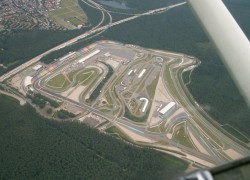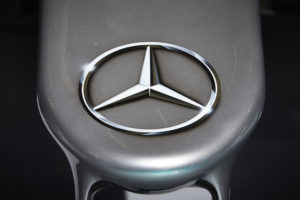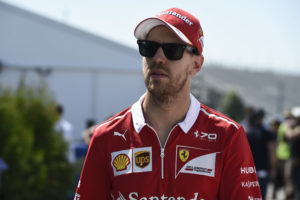
Formula 1 returns to Germany and the Hockenheimring for the eleventh round of the absorbing 2018 season.
Throughout the decades Germany and Formula 1 have become synonymous, arguably, because of a man named Michael Schumacher. Schumi’s unprecedented brilliance not only made him a record breaking seven times world champion but also catapulted F1 to superstardom in Germany. What’s more, Schumacher’s relentless genius easily transcended the boundaries of his sport and seeped into the consciousness of sports fans around the globe. To this day hardly anyone would speak of Formula 1 with mentioning the unmatched genius of Schumacher. Keep fighting Michael.
These days there is another German at the forefront of the sport. Sebastian Vettel, aiming to win a fifth world title, currently leads the driver’s standings by eight points from Lewis Hamilton. And if he was determined to take victory at Silverstone one can only imagine that he’ll be even more resolute to win on home soil.
Ferrari’s stunning pace in Silverstone would’ve come as a bit of a surprise to Mercedes given the team’ long running domination of the British circuit. Mercedes have been an incredible team at the forefront of Formula 1 for the last three and a half years. But they’ve been placed under enormous pressure in 2018. Ferrari has pushed the German mark into uncharted territory and they haven’t responded in the most elegant of ways. Off the track technical director James Allison called Raikkonen’s clash of wheels with Hamilton in Silverstone “either incompetent or deliberate”. Peculiar statements like this only tell of one thing – they’re starting to feel the pressure.
 Nevertheless, they are an incredibly resourceful and driven team who will bounce back sooner rather than later. Their first opportunity to do so comes this weekend around the 4.574 km Hockenheimring. The circuit’s layout is a blend of long straights and a final sector of medium-speed corners that should play to the strengths of a superior aero package and may bring Red Bull somewhat in to play.
Nevertheless, they are an incredibly resourceful and driven team who will bounce back sooner rather than later. Their first opportunity to do so comes this weekend around the 4.574 km Hockenheimring. The circuit’s layout is a blend of long straights and a final sector of medium-speed corners that should play to the strengths of a superior aero package and may bring Red Bull somewhat in to play.
The hairpin in the first sector of the lap is a key area for overtaking and demands good braking performance. Despite a relatively short lap drivers and engineers seek to strike a balance between top-speed and downforce. “You’d like to have the downforce for the stadium and to keep it steady on the brakes but equally you don’t want too much drag on the straights,” says Red Bull driver Daniel Ricciardo.
 The final sector is not favourable for overtaking but the stadium section is a vital element to what makes the German GP unique. The decidedly muted sound of Formula 1 cars should make it possible to hear the cheering of the crowds, should a certain German driver be leading the race.
The final sector is not favourable for overtaking but the stadium section is a vital element to what makes the German GP unique. The decidedly muted sound of Formula 1 cars should make it possible to hear the cheering of the crowds, should a certain German driver be leading the race.
The driver’s will need to vigilant at the start of the race as the first corner tightens dramatically before opening up onto the straight. Although there is an expanse of run-off area a touching of wheels or front-wing is a high probability.
Though it may be the home race of Mercedes it’s likely to be a difficult task for Hamilton and co to beat Ferrari to the chequered flag. And if either Hamilton or Bottas best the Italian team it’ll be 67 laps you wouldn’t want to miss.


